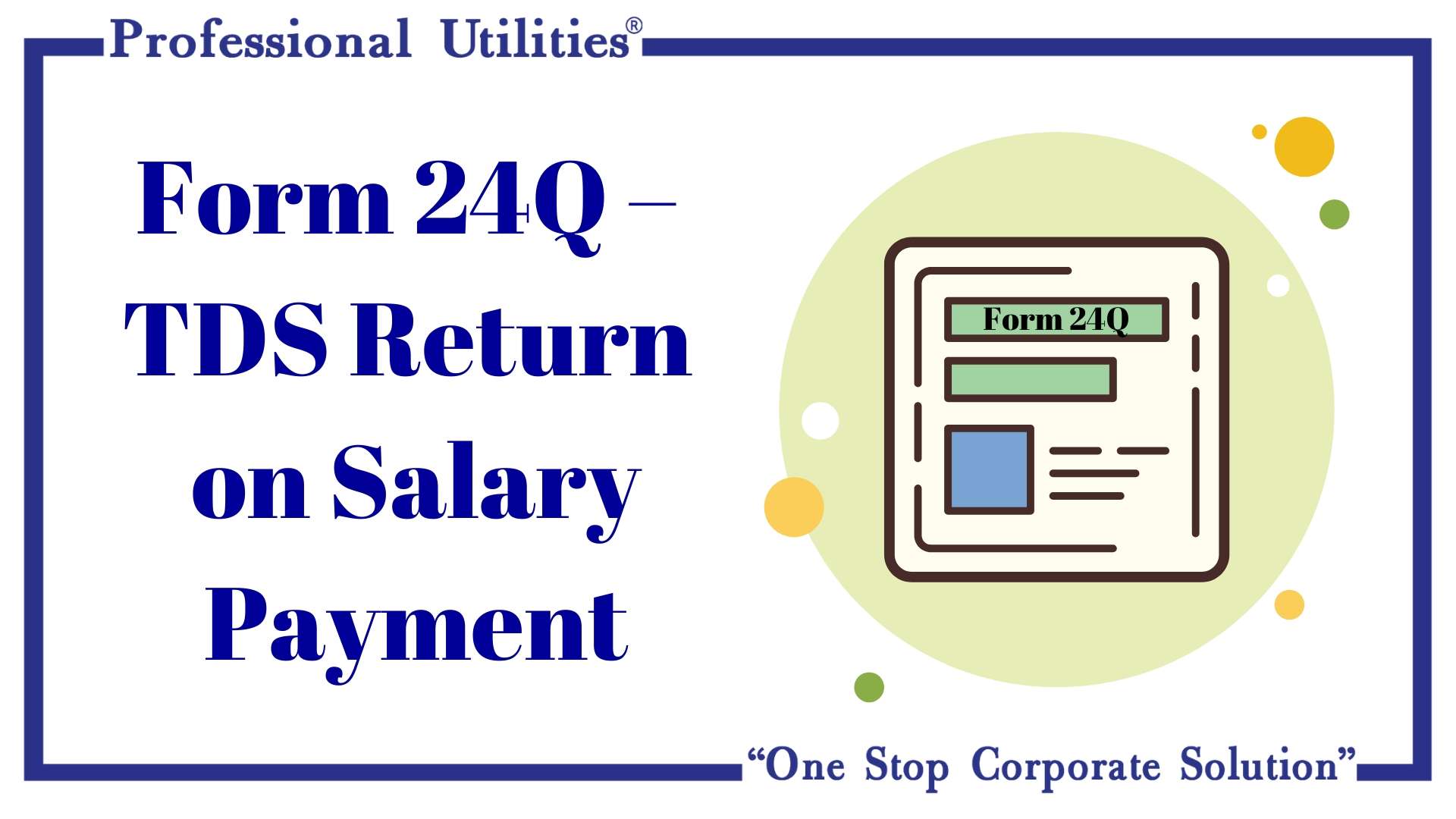
Service Info:
- Short Name : Form 24Q
- Category : TDS
- Subcategory : forms
- Amount : ₹1500.00
What is Form 24Q?
Form 24Q is a quarterly statement that employers in India must file with the Income Tax Department. Its primary purpose is to declare the TDS deducted from employees' salaries. This form is essential for tax compliance, record-keeping, and ensuring transparency in the tax deduction process. It acts as a bridge, ensuring that the tax withheld from employees' paychecks reaches the government's coffers.
Service Description:
Why is Form 24Q Important?
Form 24Q serves several vital functions:
·
Tax Compliance: It helps employers adhere to Indian tax laws by systematically reporting TDS on salaries,
which is crucial for auditing and legal reasons.
·
Record
Keeping: It maintains an official
record of the TDS
deducted from employees' salaries each quarter, benefiting both employers and employees.
·
Facilitates Refund
Claims: For employees, it helps in claiming any tax refunds
due, as it accurately reflects the amount of tax deducted from their
salary.
·
Streamlines Tax Assessment: The detailed information on salary payments
and tax deductions simplifies
the tax assessment process for employees.
·
Ensures Transparency: It promotes transparency in the tax deduction and deposit
process, fostering trust among the employer, employees, and tax authorities.
· Avoids Penalties: Timely and accurate filing helps employers avoid penalties and interest charges for non-compliance.
Who Needs to File Form 24Q?
Any employer who deducts TDS from the salary paid to their employees is required to submit Form 24Q. This applies to private firms, public companies, partnerships, government agencies, and even individuals and Hindu Undivided Families (HUFs) whose accounts are subject to audit under Section 44AB of the Income Tax Act, 1961. The employer-employee relationship is a prerequisite for TDS deduction under Section 192 of the Income Tax Act.
Components of Form 24Q
Form 24Q is structured to capture detailed information and includes two main annexures:
· Annexure I: This
annexure is required for all four
quarters of a financial year. It provides a break-up of TDS (deductee-wise) against each challan. Key details include the challan serial number,
deposition date, BSR code of
the branch, total amount, and allocation of TDS and interest among
deductees. It also specifies deductee details such as PAN, name, amount
credited or paid, date of credit/payment, TDS amount,
education cess, and TDS section code
· Annexure II: This annexure is only applicable for the last quarter (January-March) of the financial year. It provides a comprehensive summary of an employee's salary information for the entire financial year. This includes salary break- up, any deductions claimed by the employee (like those under Chapter VI-A), total tax liability, income from house property, and other sources of income. Recent updates have made Annexure II more detailed, requiring comprehensive breakdowns of salary components, tax exemptions (e.g., HRA, LTA), standard deduction, and detailed Section 80C deductions.
How to File Form 24Q?
Filing Form 24Q can be done online and involves several steps:
1. Preparation: Employers must gather all necessary information, including their TAN and PAN, employee PANs, salary details, and TDS payment details (challan numbers and dates). The form should be prepared using software or utilities provided by the Income Tax Department, ensuring accuracy and validation. The file should be in ASCII format with a '.txt' extension.
2. Validation: The prepared file needs to be validated using the File Validation Utility (FVU) tool, available on the NSDL e-Gov platform. This tool checks for errors and ensures the file conforms to the prescribed data structure.
3. Submission: Once validated, the data is converted into an FVU file. Employers then log in to the TRACES (TDS Reconciliation Analysis and Correction Enabling System) website using their TAN and password. The FVU file is uploaded, and the submission is authenticated using a Digital Signature Certificate (DSC) or Electronic Verification Code (EVC).
4. Acknowledgement: Upon successful submission, an acknowledgement is generated, which should be saved for future reference.
Online submission is mandatory in certain cases: if a statement contains 20 or more tax deductee records for a quarter, if the deductor's books of accounts require auditing under
Section 44AB, if the deductor is the principal officer of a company, or if the deductor is a government office.
Due Dates for Filing Form 24Q
Meeting the deadlines for Form 24Q is crucial to avoid penalties. The due dates for each quarter are:
· Q1 (April - June): July 31st of the same year.
· Q2 (July - September): October 31st of the same year.
· Q3 (October - December): January 31st of the following year.
· Q4 (January - March): May 31st of the following year.
Penalties for Late Filing
Failure to file Form 24Q by the due dates can result in penalties and interest charges:
· Late Filing Fee: A fee of 200 per day is charged until the return is filed, under Section 234E of the Income Tax Act, 1961. However, the total fee cannot exceed the amount of TDS.
· Interest: Interest may be charged for late deduction (1% per month) or late payment (1.5% per month) of TDS.
· Penalty under Section 271H: An assessing officer may levy a penalty ranging from 10,000 to 1,00,000 for not filing the TDS statement within the due date This penalty may be waived if the return is filed within one year from the due date, and all applicable interest and late filing fees have been paid, and the TDS has been deposited with the government.
Issuance of Form 16
After filing Form 24Q, employers are required to issue Form 16 (TDS certificate for salary income) to their employees. Form 16 is crucial for employees as it serves as proof of tax deduction, is essential for filing their income tax returns, and helps in claiming any tax refunds. Form 16 has two parts: Part A (employer and TDS summary) and Part B (detailed salary break-up, deductions, and tax liability).
Corrections to Form 24Q
Employers can correct errors or update information in Form 24Q after it has been filed by submitting a correction statement. This is important to ensure that the tax credit reflects correctly in the employee's Form 26AS (annual tax statement). Corrections can include updating deductor details, challan details, deductee details (including PAN), or salary details.

